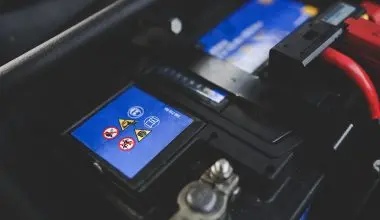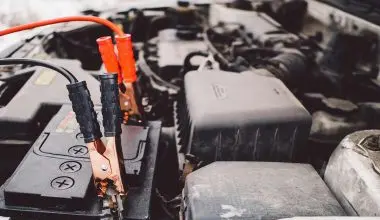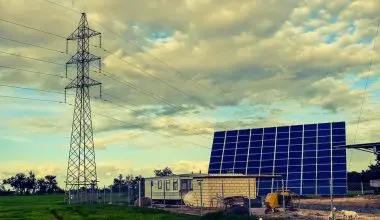Table of Contents Show
Climate change is a well known problem since quite a few years but it is evident that our efforts in solving the issue have fallen short of the targets we set, which is obvious from the conclusions of the recent studies concluding that carbon dioxide levels in atmosphere have reached peak levels and the damage has increased with such drastic pace that now even if we meet the 2016 Paris agreement targets, which in itself seem a bit far fetched for now, global temperatures will most likely rise by 1.5˚C by 2030.
The worsening situation requires us to increase our efforts in the struggle to protect our environment and this means we cannot just rely on higher authorities and organizations for everything but need to act on an individual level for real change to take place.
Every small action that we, personally, take in our own home not only helps the environment but also helps in saving energy and more necessarily, our costs. Given below are some of the ways to conserve energy at home.
Lighting:
1. Starting with lights, which are the most energy consuming devices at home, the best solution is the one that eliminates the problem from its root thus best possible way to conserve energy is to turn off lights whenever not in use.
2. With newer technologies, there are cheap and energy efficient florescent bulbs easily available in the market which can replace old high wattage bulbs in our home.
3. Combine these lights with motion sensors so that lights are only working when someone is present there.
4. Similarly, now there are dimming switches available that reduce energy consumption by switching the current off when the AC current changes direction.
5. Turn off all devices that use electricity throughout the night, such as your Wi-Fi router.
Appliances and plug-ins:
6. When using appliances like mobile chargers, and computer try to use them in energy saving mode, wherever applicable.
7. Computers should be put into sleep or hibernate mode after some time of not using it and even monitors should be set up similarly while avoiding screensavers.
8. Other most energy consuming devices at home are air conditioners (AC) and heaters. As a general rule, try to use these as less as possible and instead use other methods for heating and insulation.
9. Ceilings and walls could be insulated along with sealing off any air gaps at home, like windows.
10. While choosing heaters try to opt for infrared heaters which are the most efficient of all.
11. Moreover, ensure that thermostats are working properly and maintain a comfortable temperature rather than preferring too cold or too warm temperature, and try to use ceiling fans instead of AC.
Kitchen Practices:
Kitchen is where most of energy consumption takes place thus one cannot accomplish the goal of saving energy without making changes to our current kitchen practices.
12. As with everything else, newer products have more advanced energy saving features and so whenever you go shopping try to find appliances which are eco-friendly or energy efficient.
13. Starting with dishwasher, try to operate it only when it is filled to its maximum capacity and try to avoid using the drying cycle because it is more efficient to turn it off and then dry utensils with dry cloth. Moreover, they’ll dry out in 5 minutes after you take them out!
14. Moving on to stoves, try to use pressure cookers whenever preparing food which takes less time.
15. When baking try to turn off the oven when food is about to be fully cooked, which saves energy in the last few minutes that is mostly used for garnishing the food.
16. Try to avoid preheating ovens for food except when it is an absolute necessity for any recipe, which requires high temperatures combined with slow cooking times.
17. After using oven, it retains heat for almost half an hour which can be used to warm up some other things requiring slight heat like cookies, etc.
18. When using the oven, try to use ceramic and glass pans instead of metal pans to reduce the energy consumed to achieve same temperatures.
19. When food like meat is to be defrosted, place it in fridge overnight, if possible, to reduce the electricity consumed using microwave oven
20. Use microwaves for smaller quantities of food while for larger quantities it is much more efficient to use pressure cookers rather than conventional ovens.
21. When boiling water for food make sure to only use the quantity sufficient for food because more water means more energy needed to boil it.
22. Moving further to refrigerators, make sure to not open the door unnecessarily, which many people do quite frequently, and whenever door is closed ensure that the seal is intact or else you will waste precious watts.
23. If going away for sometime and fridge is empty then make sure to turn it off before leaving.
24. When fridges are used, some of the older models tend to build up ice which should be removed regularly and also try to cool down foods to room temperature first before placing them to increase operating efficiency and decrease running costs.
25. Same rules apply to freezers as well,, so try to defrost them regularly as well.
Moving on to General Household Practices to Save Energy:
26. Set your geyser to temperatures of around 60 ˚C that is quite comfortable and yet, does not waste a lot of energy. Nowadays new solar heating units are also available that may carry a bit higher upfront costs but on the long run can lead to savings of around 200kWh to 250kWh of electricity per month, which is quite significant. This accounts to hundreds of dollars of saving each year!
27. When washing clothes try to use the machine when you fill it completely and do the washing with cold water to reduce energy used to warm it.
28. When using washing machine, use cold water detergents along with setting machine to short-washing.
29. In summers or on warm days try not to use dryer and instead take out clothes and hang them to dry.
30. Another good tip is to take out clothes just before drying cycle is complete and then iron those clothes.
31. In general, only buy appliances that are required and try to do much of the work via hand and if they are bought then they should be using power that is just fulfilling the requirements.
32. Always use thermostats wherever they are applicable with temperatures in the range that are just comfortable and never overdo it.
33. Whenever, house is painted try to choose lighter colors which do not absorb as much light as darker colors and thus less lightening is needed.
34. Start timing your showers, 1 minute to shampoo, 1 minute for body-wash and 3 minutes of rinse. 10. Get a shower-head that saves water.
35. Grow your own herbs; it’s accessible, doable and very cheap. If you don’t have a garden then you’ll need just a couple of indoor pots. All it takes is a few seeds.
With these tips and tricks saving energy becomes easy although it should be kept in mind that in the initial days it might seem difficult or require additional costs but in few weeks’ time when the electricity bill is delivered the results will speak for themselves.






